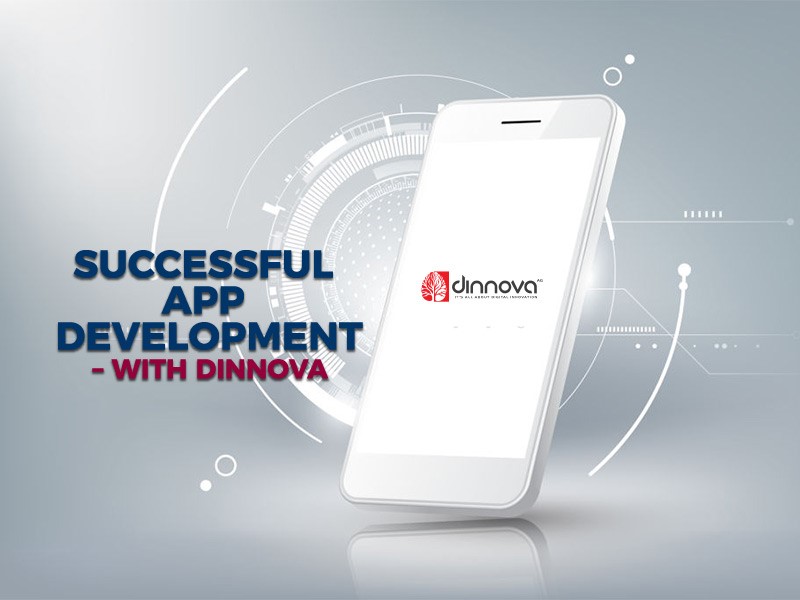You would like to upgrade your online marketing as part of your company’s digitalization process? The so-called internet marketing comprises all measures that present your products and services digitally and that generate sales. Up to now, only websites represented those digital channels that potential customers used to gather information, reach out to the company or to buy a certain product or service. Beside the classic Google search function, e-mail marketing and conventional websites, applications now do capture the online market. In 2018, about 700 transactions worldwide took place via tablets and smartphones, and therefore via mobile devices. In the Asiatic region, more than half of all transactions are completed via mobile devices – and the number is rising. It is now obvious: companies that want to stay relevant in the future, have to upgrade.
Since applications offer advantages like immediate access, a customer profile and easier updates, they can be considered must-haves. Studies show that especially in new markets, information is gathered and goods are purchased via apps. Their target group always needs to be considered: this current trend is reinforced by the technophilic generation Y, which comprises tomorrow’s customers. But: one app is not like another. Actually, three main application types have emerged: the hybrid app, native and the so-called web app. What these terms stand for, how they differ one from another, and which one you should choose for your company? Find out more in the following blog sections!
Native App, Hybrid App or Web App? Definitions and Advantages
The bigger the choice, the harder it is to choose: All three app types have their respective advantages. We will have a closer look at them – regarding target groups, project types and their future potential.
The native app or native application
‚Native’ stands for ‚adapted‘: indeed, said native applications are conceptualized for different platforms individually. Hence, native applications do only work with those target platforms that are programmed with the same programming language. Each platform speaks its own ‘native language’ – therefore an application has to be written with a code that platforms like Android, iOS or Windows understand. For each one of the latter, a respective application has to be conceptualized, one that can access the hardware and be integrated in the respective operating system. Native applications access it in order to send push-notifications, to use GPS data and the mobile device’s camera.
Native apps can be purchased and downloaded in app stores that are connected with the operating system. Firstly, thanks to their native user interface, they offer users an excellent user experience. On the other hand, their app development and adaptation to different operating systems entails higher development costs, also when planning to release an update. The latter needs to be developed for each operating system, separately.

The web app
Mobile websites can be accessed simply using an internet browser – with only one code for each platform. Be it Android or iOS: the browser downloads online data to correctly display the mobile website, yet an internet connection is required. The latter requirement is, at the same time, the mobile website’s blind spot. Without a functioning internet connection, it is almost impossible to download the mobile website, even if it can be facilitated thanks to a few tips and tricks. In contrast to native apps though, the website can hardly access the mobile device’s hardware. Websites are not downloaded like a native app, but only in the chosen browser, and tagged by a digital bookmark. Its native language is HTML5 – the same goes for web apps. As a matter of fact, these are websites that look like apps. In contrast to native apps though, web apps only require one cross-platform code – which is why their conception is much cheaper and less time-consuming. Plus: web apps function like ‚real’ apps online, too, and can access the device’s hardware. A web app can be purchased and downloaded like its native alternatives in the app store, wherefore the same general conditions apply. Furthermore, the internet is getting faster and networks stronger – two reasons why initial disadvantages will no longer hold true in the future.
The hybrid app
You want to pair the native app’s high usability with the availability for different platforms? Hybrid applications are this difficult task’s solution. Hybrid apps do not have to be written individually for Windows, Android or iOS, but with only one web code. Their homogeneous development reduces development time and costs – even for successive updates.
Technologies like JavaScript, CSS and HTML5 are being used to build them, whilst hybrid apps are being wrapped as native ones. Since the hybrid version can be used via the web, as well as via mobile devices like tablets or smartphones, your company can therewith reach a wider target group.

Successful App Development – with Dinnova
As you can see, all app versions come with a variety of advantages and special characteristics. These are crucial factors when it comes to app development as a part of your digital marketing strategy. Keep in mind: The bigger your target group and the lower their expectations regarding the app’s performance and usability, the more reasonable the development of a HTML5 based web app or a hybrid alternative. If your customers mainly use a specific operating system instead, or you can afford higher development costs, we highly suggest the development of a native application. Whatever you choose to go for: our professional team of designers and developers will support you in conceptualizing and implementing your app strategy – from its first draft to its successful implementation! Contact us today – our Dinnova service team is looking forward to hearing from you.

